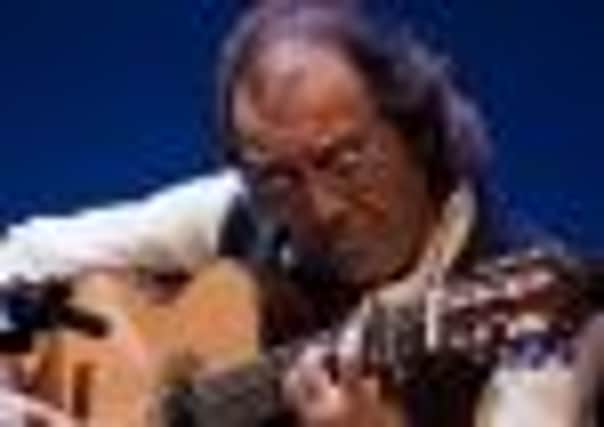Jim Gilchrist: ‘Flamenco is about pushing out the envelope of emotion’


The painting comes to mind listening to some of the more impassioned moments – David Lagos’s Tangos de arena or Fernando Terremoto’s atmospheric Luz en las balcones – in the superb new Beginner’s Guide to Flamenco, a triple CD on the Nascente label, compiled by the Edinburgh-based ethnomusicologist and music writer Jan Fairley, which provides a vivid overview of Spain’s currently thriving flamenco scene.
“Flamenco,” says Fairley, “is about pushing out the envelope of emotion – but only within reason. It has to stay credible and not become histrionic so those listening must register the pain or suffering or pleasure as something they know and feel. Marginality is at its heart – the marginality of the abandoned.”
Advertisement
Hide AdAdvertisement
Hide AdGranted “intangible cultural heritage” status by Unesco two years ago, flamenco is “a music about life and death and very much geared to truth,” says Fairley, who has compiled the collection for Nascente while carrying on a doughty battle with cancer.
“It’s about real feelings and experiences, and as such it can be rather powerful and potent and sometimes too much in face for non-Latins.
“It is also a music with a lot of melisma and drama, and of course a lot of unusual rhythms and timings. It uses a lot of texts that get handed down so it keeps the past in the present. It’s not all ‘gypsy’ by any means, but they are still its heartland and have kept its core alive.”
From the epic drumming and chorusing of Diego Carrasco’s hoarsely-intoned Poeta de Cai to spare masterpieces such as veteran guitarist Pepe Habichuela’s eloquently brooding soléa, the three discs distil the quintessence of the artform, while also demonstrating the more eclectic elements finding their way into it – the onset of Jorge Pardo’s flutes, the Afro-Spanish fusion of Ketama with Toumani Diabaté, or the Bollywood Strings weeping their way through another Habichuela track, En el Grec. Other gems include the querulous poise of Mayte Martín in a beautiful setting of the Malagan poet Manuel Alcantara’s poem For the small tide of the port, the urgent vocals and palmas handclapping of the 4 Cantores, and a pyrotechnic demonstration of flamenco piano from Diego Amador.
Like many such compilations, there are some notable omissions, José Mercé, for instance, largely due, as Fairley points out, to limited budgets and the contractual restrictions of major record labels. Similar restrictions are doubtless reflected in the content of another new Nascente Beginner’s Guide, this time to Scandinavian music. Compiled by Tatiana Rucinska, its three CDs are nominally labelled Pop & Contemporary, Folk & Roots and Jazz experimental & Atmosphere. The result, if frequently highly engaging, may also be puzzling. Aficionados of the major ECM label’s stable of notable Scandinavian jazz musicians – Jan Garbarek, Bobo Stenson, Tord Gustavsen et al – will find them absent, although the late, great Esbjörn Svensson and his trio, from the ACT label, are present with their signature Gagarin’s Point of View.
The Jazz and Folk discs are more concerned with often intriguing fusion than with strict tradition or straight-ahead jazz. You’ll find, for instance, as many if not more fiddle sounds on the former as on the latter, such as the wonderful outburst of hardanger fiddling which concludes the infectiously reggae-driven Mårblå, from Norwegian saxophonist Karl Seglem. Other delights include a beautiful study, Heimkoma, from young Icelandic pianist Agnar Már Magnússon and a waltz from the Benny Anderssons Orkester – yes, that Benny Andersson, late of Abba.
• The Beginner’s Guide to Flamenco and The Beginner’s Guide to Scandinavia are released by Nascente, see www.demonmusicgroup.co.uk/nascente